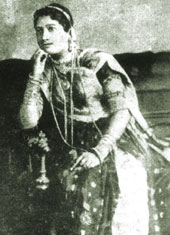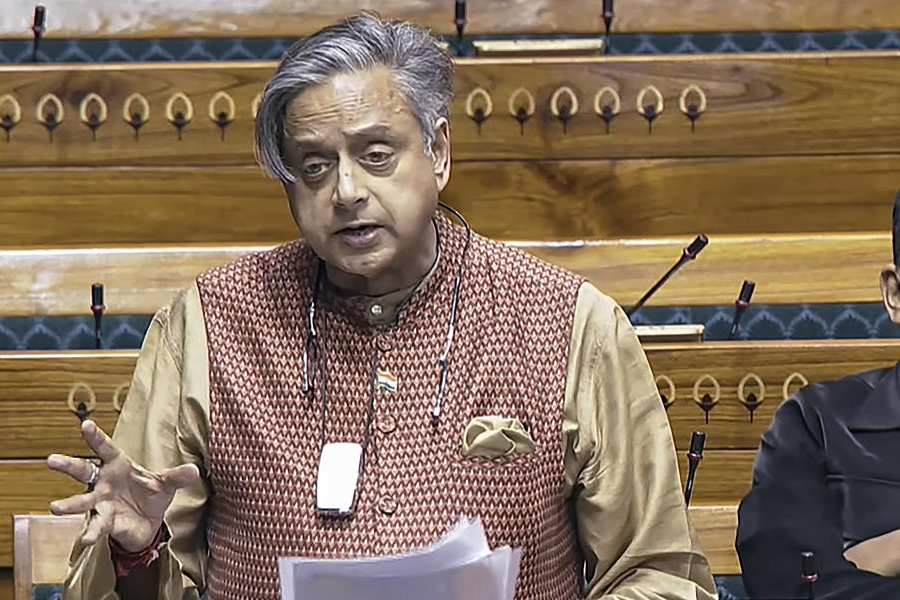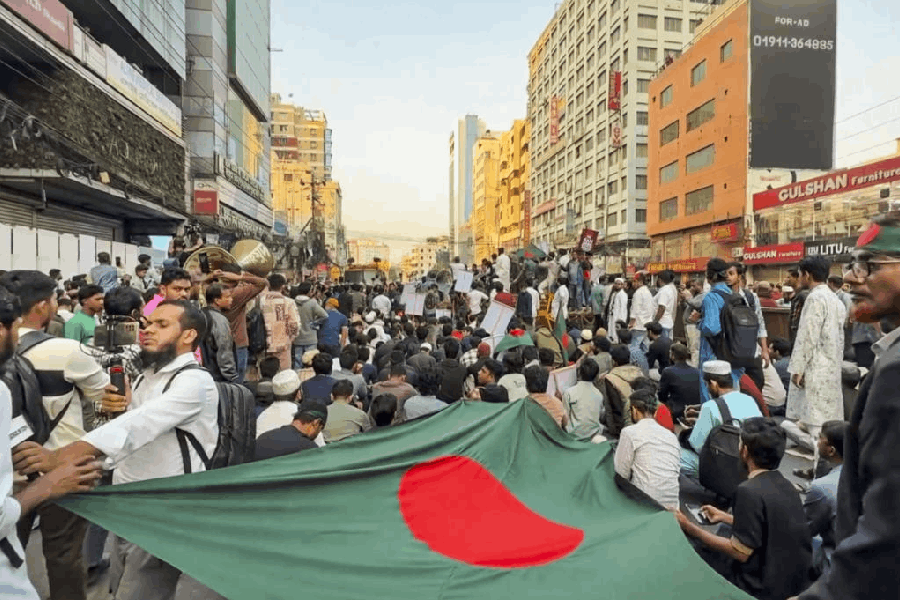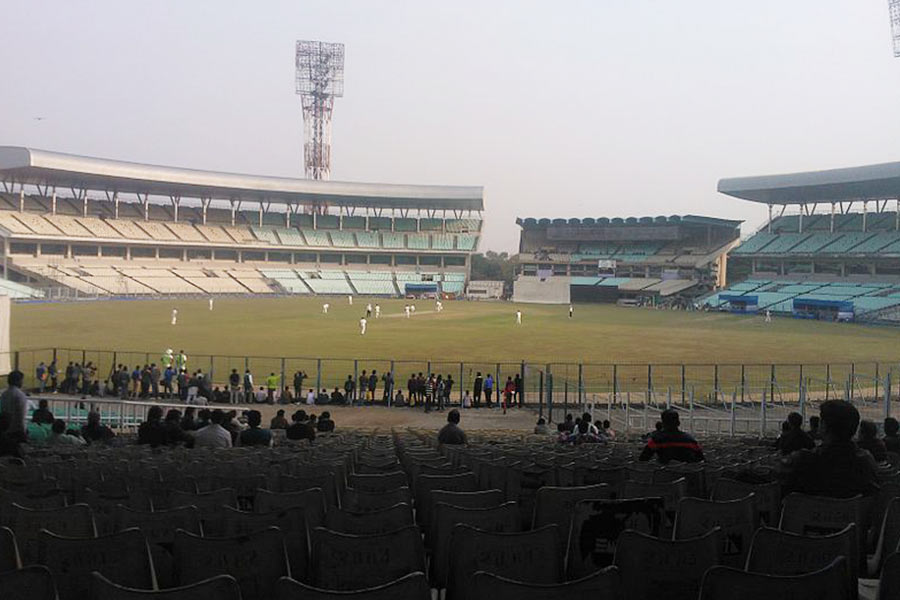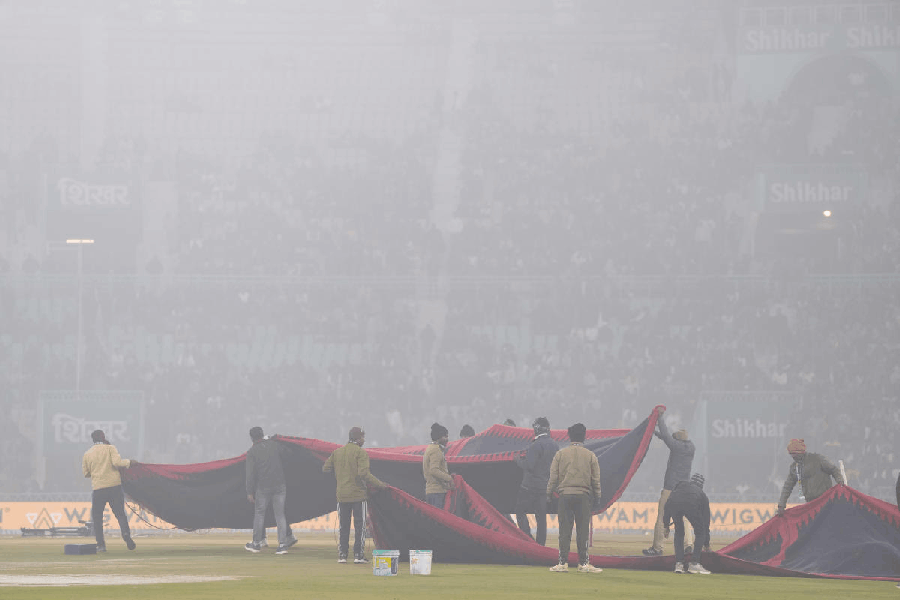 |
| her story: Binodini and (below) some of the books brought out by Thema |
 |
 |
 |
It was the mid-1960s. Editors of a bi-annual magazine called Ekkhon had ferreted out a piece of writing from the dusty shelves of oblivion and serialised it for their summer and autumn issues, drawing immense public attention. Among those who read it with a great deal of interest was scholar and theatre critic Samik Bandyopadhyay. But by the time he had put it down, something had begun to disturb him. There were unexplained details; he had questions, to which there seemed to be no available answers. But he was forced to put them aside because there was little that he could do to find out ? at least at that time.
That piece of writing was Aamar Katha ? the personal narrative of Binodini Dasi, Bengali theatre’s first and perhaps most versatile leading lady. It was a landmark of sorts ? the first autobiography of a Bengali theatre actress. But reading what was ostensibly Binodini’s honest and open account of her own life, Bandyopadhyay could nevertheless sense whispers of unsaid things between the lines. “An autobiography can only say so much,” Bandyopadhyay points out, “It never really speaks the complete truth.”
So, after a wait of many long years, Bandyopadhyay is now attempting to complete the picture ? of Binodini and others like her ? with the help of their miscellaneous written work. His publishing company Thema is bringing out a series on individual stage and screen actresses of Bengal, creating a collage of whole personalities by stringing together bits and pieces of their thoughts scattered in their diaries or in the letters they wrote, the poems they scribbled, and the stories or the film scripts they penned.
“When writing an autobiography, the author is obviously guarded to a certain extent,” explains Bandyopadhyay. “Also, formal autobiographical protocol doesn’t really permit self-proclaiming styles. But a personality can reveal itself through other written work.”
So we get a glimpse into the mind of Karuna Bandyopadhyay ? the first actress in the series ? that goes beyond her public and perhaps most well-known image as Pather Panchali’s Sarbojoya. Interestingly, in one of her essays, Ja Haray Na, she herself questions this tendency to pigeonhole. “Many say Pather Panchali is Ray’s greatest film. I don’t agree? That is like saying there is only one beautiful strain that the flutist can produce.”
And we are pleasantly surprised to discover that an ostensibly serious actress like Binota Roy, who with her memorable performance in the 1944 film Udayer Pathey, carved out a permanent niche for herself in the world of Bengali cinema, had a charming sense of humour. In her story Andhar Deyul, Roy, who was brought back to the silver screen by Mrinal Sen in 1972 with Kolkata 71, enumerates, tongue-in-cheek, various kinds of “good addictions”.
Shova Sen’s Onra, Amra, Era plays a sort of double role in the series. By writing about actresses and their relationships with her, she reveals the predilections of her own mind, as well as little-known facets of the personalities of many of her contemporaries.
A snippet of conversation she had with veteran actress, Sarayu Bala, is an example. “It is shameful for us that in your presence, other, perhaps less deserving actresses, receive recognition for contribution to theatre,” Sen said. After a brief pause, Sarayu Bala replied, “Can anything be sadder than that?” Could any autobiography of Sarayu Bala’s communicate her displeasure so poignantly? Perhaps not.
No doubt, there were many such omissions in Aamar Katha, as well as her second memoir, Aamar Abhinetri Jibon, either because of “autobiographical protocol” or simply because of Binodini’s sense of humility or modesty. Binodini repeatedly refers to herself as a “fallen woman” (potita nari) and sinner (papiyoshi). And while her style is formal and language dignified, the tone is almost confessional. But just beneath the surface of these almost self-denigrating words, Bandyopadhyay has perceived a deep sense of what can best be described by the Bengali word abhimaan ? a bitter-sweet feeling of hurt caused by a loved one.
But it is her other written work, her letters, her poems, etc, through which Binodini speaks volumes about herself and which provide more than a passing glimpse into her personality. But never in her memoirs does Binodini talk about her abhimaan ? which reveals her tacit need to be understood and valued.
Perhaps the most significant inspiration for the series came from Bandyopadhyay attempting to understand some things left unexplained by Binodini in her fairly large body of written work. Binodini had requested her mentor and teacher Girish Chandra Ghosh to write the introduction to her first memoir, Aamar Katha. He had done so. But Binodini rejected it, asking him to rewrite it and it was not published along with the first edition of Aamar Katha. But before the second edition came out, Ghosh died, without having written another introduction. Sad and guilty, Binodini made it the introduction to the second edition of Aamar Katha. What surprised Bandyopadhyay after reading Ghosh’s introduction was that it was a positive and supportive one, full of praise for his favourite pupil. And what baffled him was why she had rejected it in the first place.
Of course, Bandyopadhyay speculates: In Aamar Katha Binodini writes about the infamous Star Theatre “betrayal”. She writes frankly about being coaxed by Ghosh and others into living with a wealthy gentleman who was to finance the construction of Star, with the promise that the theatre would be named after her. But on the opening night, Binodini discovered that it was not to be. Bandyopadhyay’s guess is that Binodini expected Ghosh to mention the episode in the introduction and vindicate her name. “There is no other contemporary corroborative evidence of the ‘betrayal’ episode,” Bandyopadhyay explains, “and Binodini may have wanted some affirmation”. But Binodini ? like Pygmalion’s Eliza Dolittle ? never really gets much credit from her patrons and mentors.
Yet in the literature of that period, there is some reference to the magnitude of Binodini’s contribution - and not just to acting. The poem, Amrito-Modira, by Amrito Lal Bose, throws light on Binodini’s role in helping Ghosh and others to interpret characters. It spells out how Binodini spontaneously enacted scenes during play-reading sessions in her house. He writes, “Kokhono chhadeytey boshey ekaki biroley/mala tuli dei ‘Julie’ Romeo-r gawley (Often she sits on a terrace alone/and as Juliet, garlands her Romeo).”
It is such surrounding material, but mostly their own written work composed during unguarded moments, that reveal their true selves. This is the premise on which Thema’s series is based. Bandyopadhyay also points out that perhaps more than any other group or profession, it is important to try and trace the true voice of actresses. That’s because by virtue of their profession, their own voices often get submerged in the voices of the many characters they portray.
At the moment, Bandyopadhyay is in the process of compiling the fifth book in the series on Ketaki Dutta’s written work. Deviating slightly from the ‘written-work only’ mode, Bandyopadhyay has conducted 10 formal interviews which will be included in the book. But otherwise, the process of collection, especially of unpublished work, has often led him to the doorsteps of family, friends and relatives who dug up rare manuscripts and letters from old chests and trunks.
Bandyopadhyay does not know which leading lady will feature in the series next. But one thing is certain ? the series will continue to stitch together snatches of written or spoken conversation to delve into the inner voices of these women. And if one listens carefully, one may solve the mystery of those stifled whispers.

